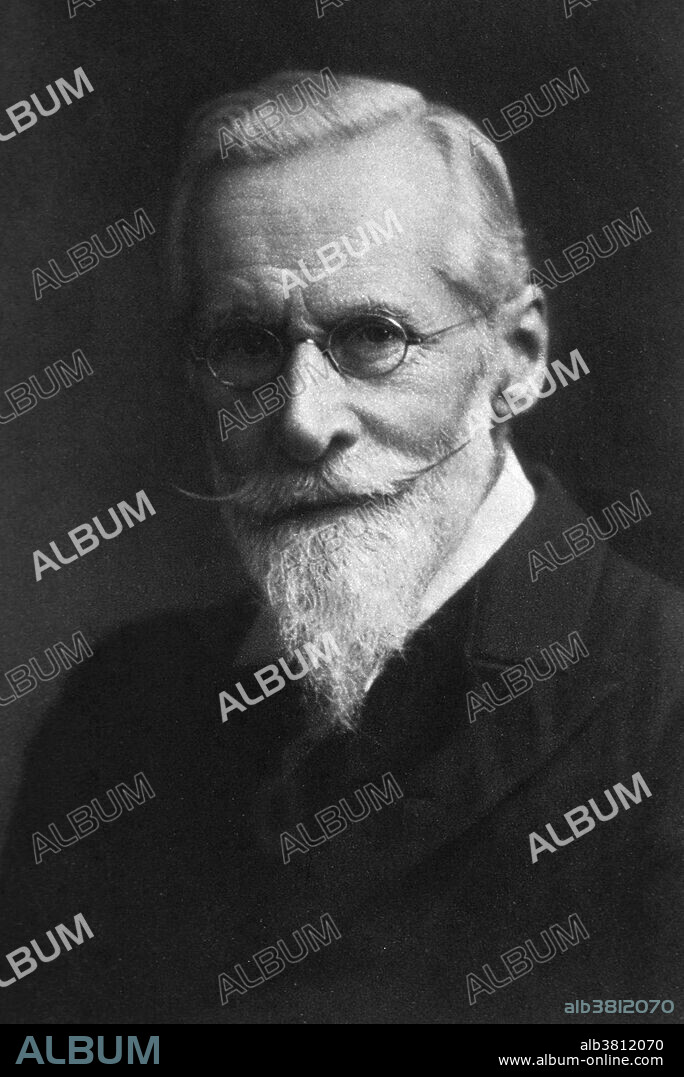alb3812070
William Crookes, English Chemist and Physicist

|
Add to another lightbox |
|
Add to another lightbox |



Buy this image.
Select the use:

Title:
William Crookes, English Chemist and Physicist
Caption:
William Crookes (June 17, 1832 - April 4, 1919) was an English chemist, physicist and spectroscopist. In 1861, he discovered a previously unknown element with a bright green emission line in its spectrum and named the element thallium. In 1895, he identified the first known sample of helium. He was the inventor of the Crookes radiometer (a system of vanes, each blackened on one side and polished on the other, is set in rotation when exposed to radiant energy) which today is made and sold as a novelty item. In his research of the conduction of electricity in low pressure gases, he discovered that as the pressure was lowered, the negative electrode (cathode) appeared to emit rays (the so-called cathode rays, now known to be a stream of free electrons, and used in cathode ray display devices). He developed the Crookes tubes (vacuum tube), investigating cathode rays. He was a pioneer in the use of vacuum tubes for the study of physical phenomena. He was one of the first scientists to investigate what are now called plasmas and identified it as the fourth state of matter in 1879. He also devised one of the first instruments for the study of nuclear radioactivity, the spinthariscope. Crookes was knighted in 1897. He lived to be 86 and died of natural causes.
Category:
Science: Personalities
Credit:
Album / NLM/Science Source
Releases:
Image size:
2640 x 3951 px | 29.8 MB
Print size:
22.4 x 33.5 cm | 8.8 x 13.2 in (300 dpi)
Keywords:
1832 • 1919 • 19TH CENTURY • 20 20TH XX XXTH TWENTIETH CENTURY • 20 XX TWENTIETH CENTURY • 20TH CENTURY • 20TH • BW • CATHODE RAY TUBES • CELEBRITIES • CELEBRITY • CHEMIST • CHEMISTRY • CROOKES RADIOMETER • CROOKES TUBE • CROOKES • DISCOVERED THALLIUM • ENGLISH • EUROPEA • EUROPEAN • EUROPEANS • FAMOUS PEOPLE • FAMOUS • FIGURE • HISTORIC • HISTORICAL • HISTORY • IDENTIFIED HELIUM • IMPORTANT • INVENTOR (MALE) • INVENTOR • KNIGHTED • MALE • MAN • MEN • NOTABLE • PEOPLE • PERSON • PERSONALITIES • PERSONALITY • PHOTO • PHOTOGRAPH • PHYSICAL PHENOMENA • PHYSICIST • PHYSICS • PIONEER • RADIOMETER • SCIENCE • SCIENCE: PERSONALITIES • SIR • SPECTROCOPIST • SPINTHARISCOPE • STUDY OF NUCLEAR RADIOACTIVITY • TWENTIETH CENTURY • VACUUM TUBES • W. CROOKES • WELL-KNOWN • WILLIAM CROOKES


 Pinterest
Pinterest Twitter
Twitter Facebook
Facebook Copy link
Copy link Email
Email
